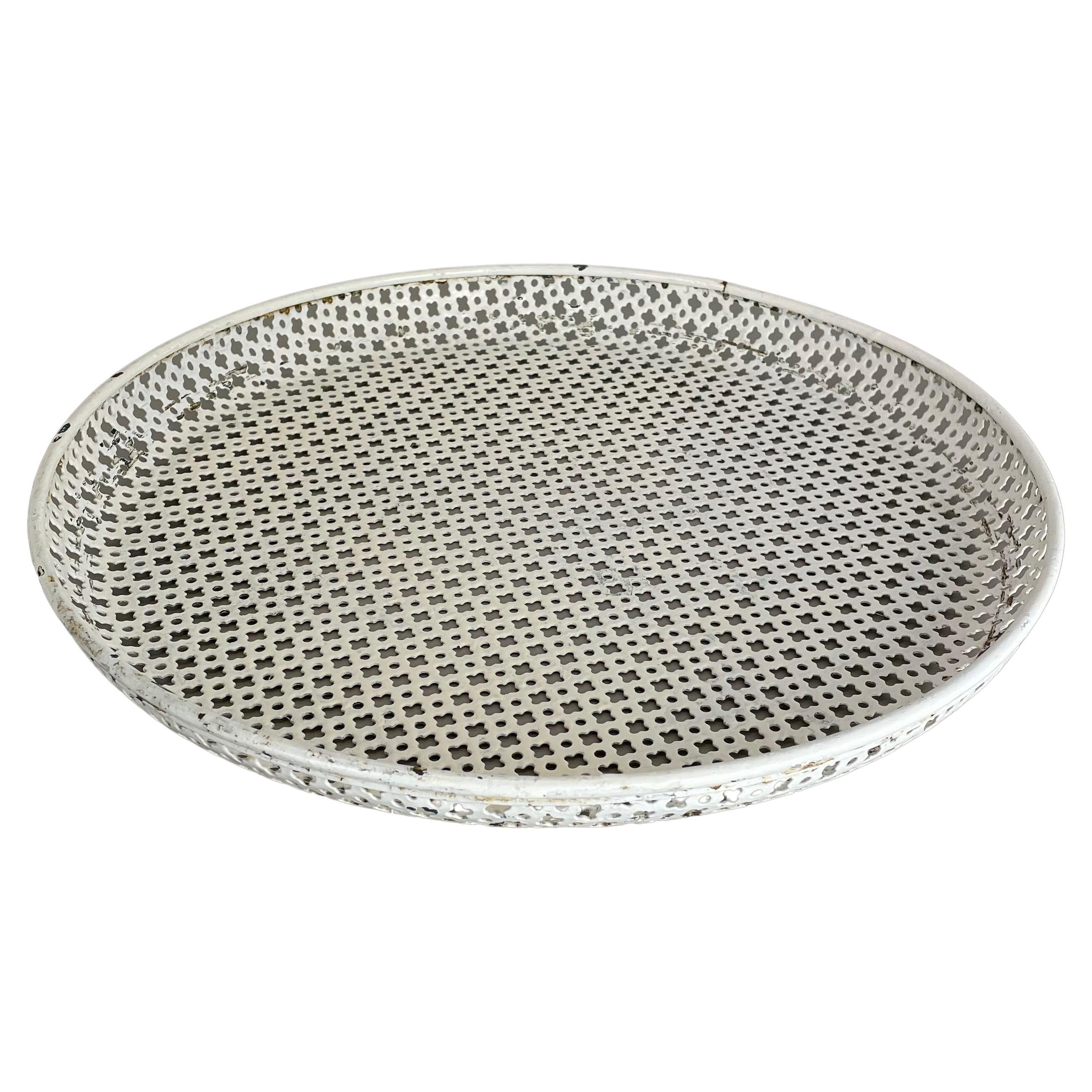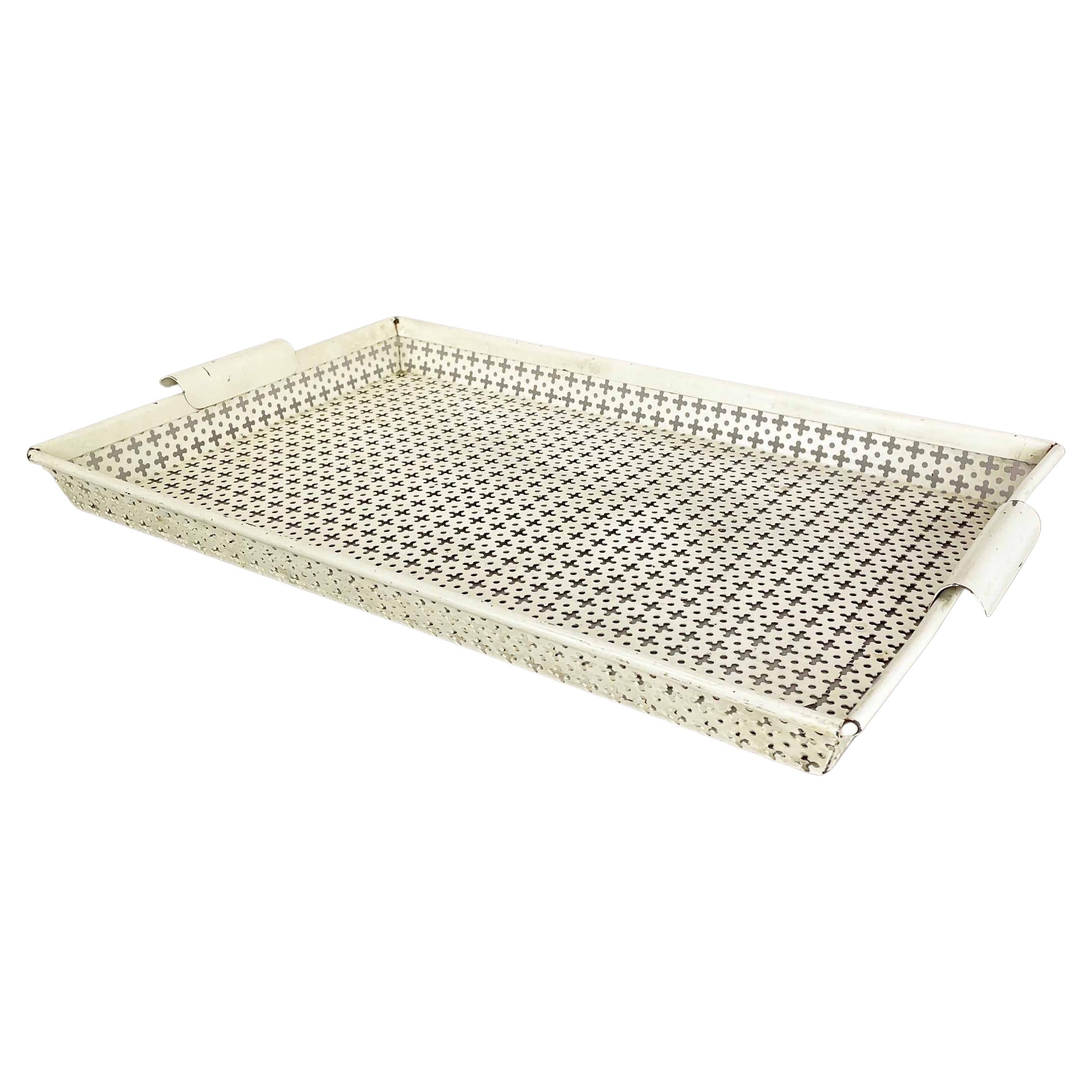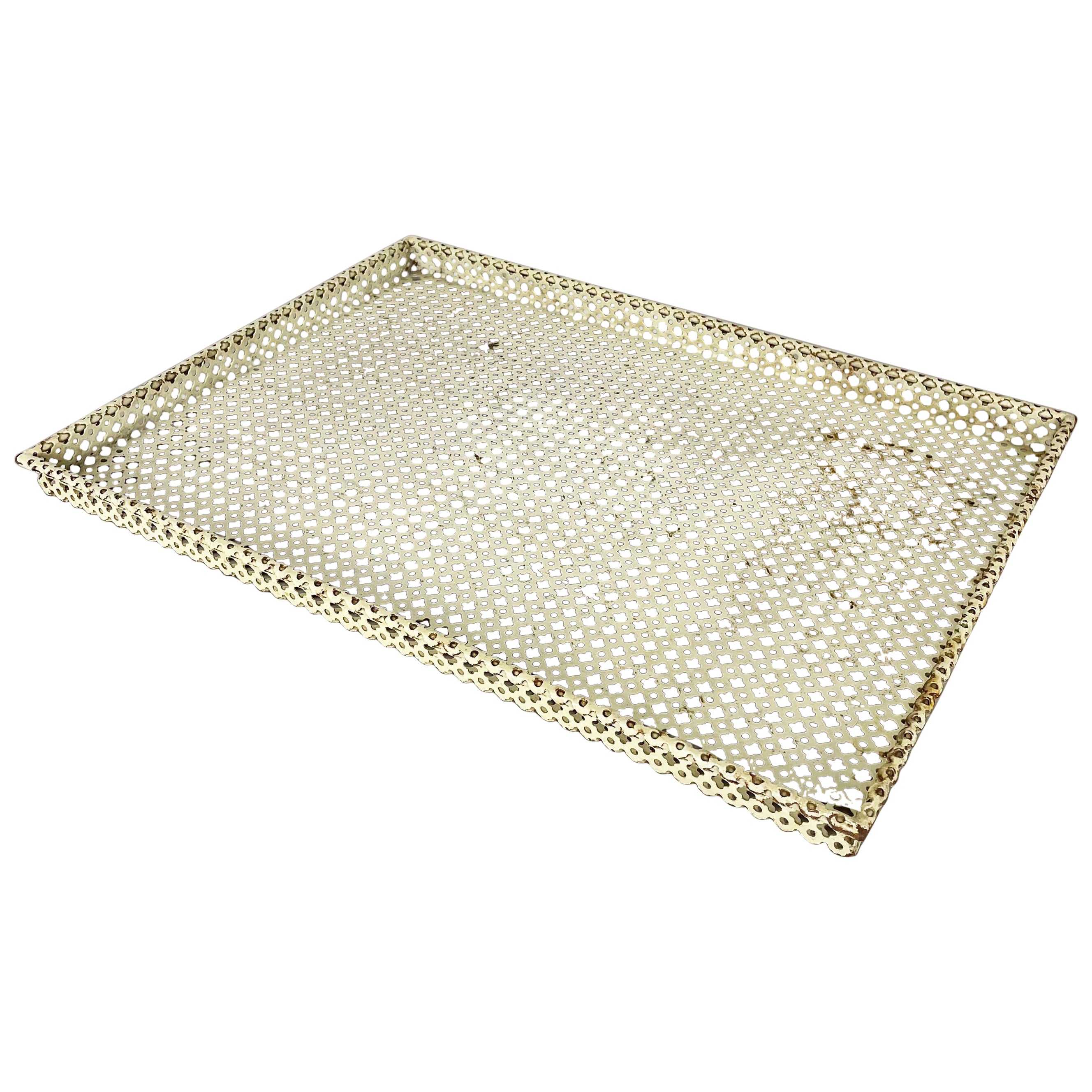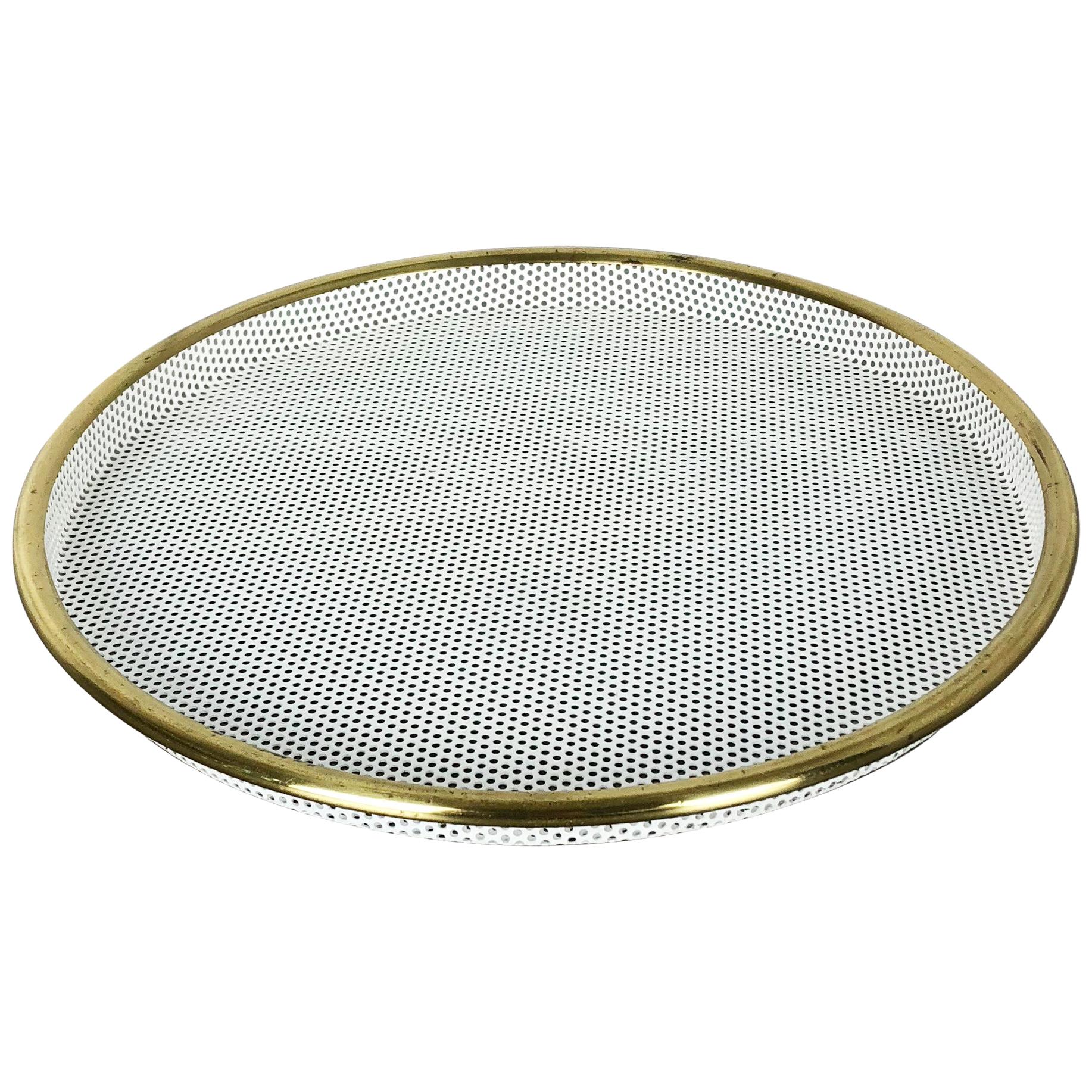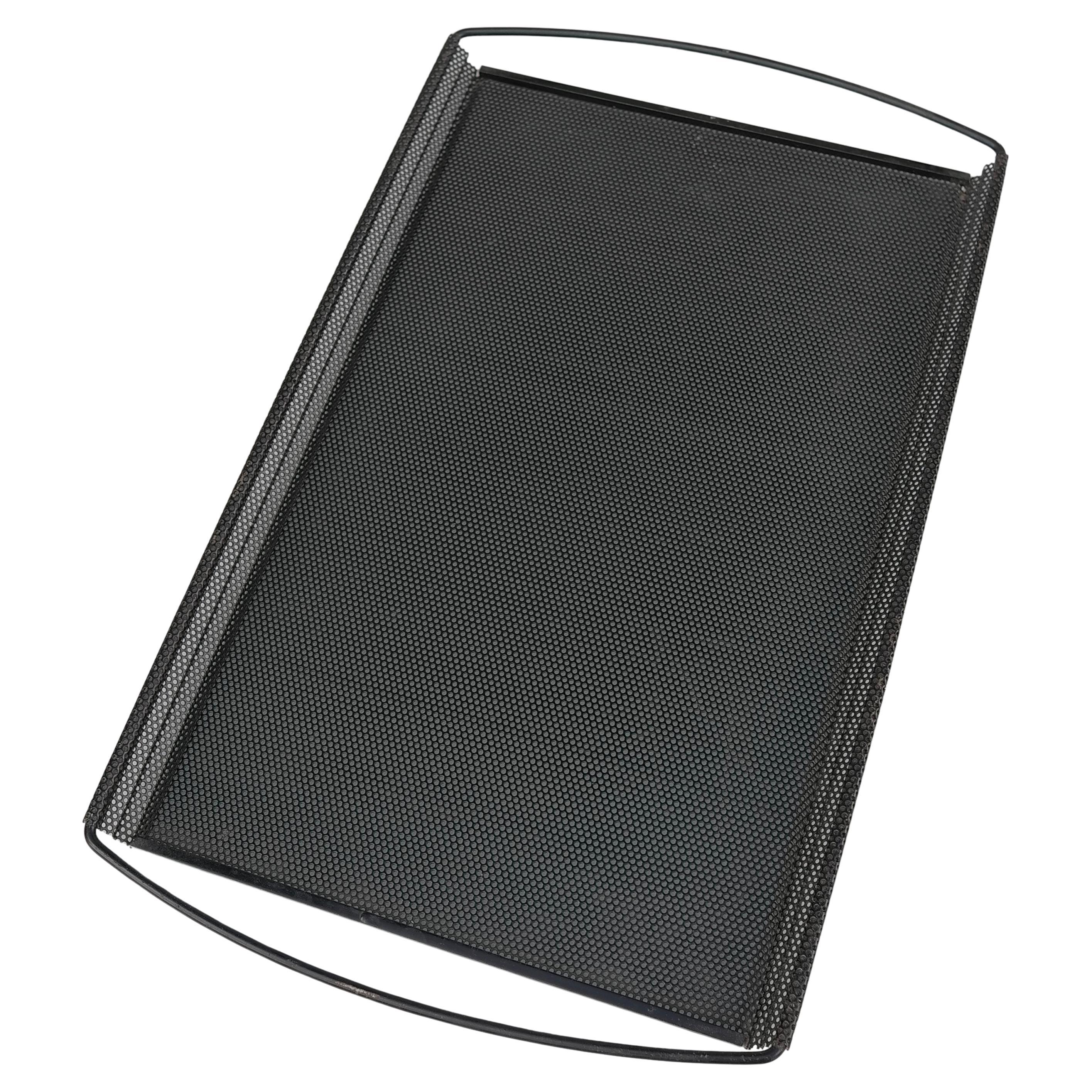Original French Modernist Metal Tray "Rigituelle" by Mathieu Matégot, 1950s
About the Item
- Creator:Mathieu Matégot (Designer, Maker)
- Dimensions:Height: 1.38 in (3.5 cm)Width: 18.9 in (48 cm)Depth: 10.91 in (27.7 cm)
- Style:Mid-Century Modern (Of the Period)
- Materials and Techniques:
- Place of Origin:
- Period:
- Date of Manufacture:1950s
- Condition:Refinished. Rewoven. Wear consistent with age and use. looks newly lacquered, which was done years ago.
- Seller Location:Kirchlengern, DE
- Reference Number:1stDibs: LU2131331913942
Mathieu Matégot
With their curvaceous metal surfaces and shapes often resembling sheets of folded paper, Mathieu Matégot's inspiring furniture and lighting designs are easily recognizable and highly sought after by collectors. By working with perforated sheet metal and metal tubing, the Hungarian-born French architect, artist and designer — who is known by aficionados for his “rigitulle” technique — created tables, chairs and decorative objects that are celebrated works of French modernism and make a statement in any interior.
Matégot attended the Budapest School of Fine Arts and Architecture. He graduated in 1929 and traveled before settling in Paris in 1931, where he worked as a window dresser for department stores and as a set designer for cabaret halls.
In 1939, Matégot joined the French army in resistance to invading Nazi forces. He was soon captured and sent to work in a German factory. It was at this factory where Matégot became familiar with the materials and techniques that would inform and inspire his trademark rigitulle method.
After the war ended, Matégot opened a workshop in Paris and began to create handcrafted furniture that didn't conform to established styles of the time. Matégot explored merging traditional and non-traditional materials — he worked with formica, glass and natural materials such as rattan — and engaged in other forward-looking experiments. Matégot soon patented his career-defining rigitulle technique and material, which saw the designer working with metal tubing and perforated metal sheets and producing thin, airy folds into the metal as if he were manipulating fabric or paper.
Many of Matégot’s designs for table lamps, pendants, tables and more are reflective of the rigitulle technique, but the best-known work that exemplifies this process is his elegant three-legged Nagasaki chair, which he exhibited in 1954 at the Salon des Artistes Décorateurs. The original Nagasaki chair gave way to a collection that included a stool and an armchair. Matégot’s Nagasaki dining chair has been reissued by Gubi and is part of the permanent collection at the Vitra Design Museum, which is home to one of the world’s most important furniture collections.
Matégot created a range of smaller items for the home — serveware, side tables and magazine racks, each distinctive in their fluid and organic forms — but halted his career in design and moved to Angers in the early 1960s in order to turn to creating art. Today he is known for his abstract tapestries as well as his furnishings.
Find vintage Mathieu Matégot furniture on 1stDibs.
- ShippingRetrieving quote...Ships From: Kirchlengern, Germany
- Return PolicyThis item cannot be returned.
- Original French Modernist Metal Tray "Rigituelle" by Mathieu Matégot, 1950sBy Mathieu MatégotLocated in Kirchlengern, DEMetal tray. Designed and produced by Mathieu Matégot. Origin: France, 1950s. Original Mathieu Matégot tray "RIGITUELLE". made in the 1950s in France. typical mategot style with ...Category
Mid-20th Century French Mid-Century Modern Tableware
MaterialsMetal
- Original French Modernist Metal Tray "Rigituelle" by Mathieu Matégot, 1950sBy Mathieu MatégotLocated in Kirchlengern, DEMetal tray. Designed and produced by Mathieu Matégot. Origin: France, 1950s. Original Mathieu Matégot tray "RIGITUELLE". made in the 1950s in...Category
Mid-20th Century French Mid-Century Modern Tableware
MaterialsMetal
- Original French Metal Tray "Rigituelle" by Mathieu Matégot Attrib., 1950By Mathieu MatégotLocated in Kirchlengern, DEMetal tray. attributed to be Designed and produced by Mathieu Matégot. Origin: France, 1950s. Original Mathieu Matégot tray designed and manufactured in the 1950s in Fra...Category
Mid-20th Century French Mid-Century Modern Tableware
MaterialsMetal
- Original French Metal Tray "Rigituelle" in Style of Mathieu Mategot, 1960sBy Mathieu MatégotLocated in Kirchlengern, DEMetal tray. In style of Mathieu Mategot. Origin: France, 1960s. This original vintage tray element was produced in the 1960s i...Category
Mid-20th Century French Mid-Century Modern Tableware
MaterialsMetal
- xxl 51x36cm Metal and brass Tray element by Mathieu Matégot, France 1950By Mathieu MatégotLocated in Kirchlengern, DEArticle: Tray element with hole pattern Designer and Producer: Mathieu Mategot Origin: France Material: metal and brass Decade: 1950s Description: This original mid...Category
Mid-20th Century French Mid-Century Modern Tableware
MaterialsMetal
- French Modernist Brass Tray "HOLE Pattern" in Style of Mathieu Matégot, 1970sBy Mathieu MatégotLocated in Kirchlengern, DEMetal tray. In style of Mathieu Matégot. Origin: France, 1970s. This original vintage tray element was produced in the 1970s in France. It was made of a wooden white lacquered ro...Category
Mid-20th Century French Mid-Century Modern Tableware
MaterialsMetal, Brass
- Rare Mathieu Matégot Rigitulle Black Perforated Serving Tray, France, 1950sBy Mathieu MatégotLocated in Den Haag, NLRare Mathieu Matégot Rigitulle Black perforated and lacquered serving tray, France, 1950s. In very good original vintage conditionCategory
Vintage 1950s French Mid-Century Modern Serving Pieces
MaterialsSteel
- French Modernist Rigituelle Tray in Red Metal by Mathieu MatégotBy Mathieu MatégotLocated in Brooklyn, NYThis tray features Matégot's signature curvaceous lines and perforated 'rigitulle' metal.Category
Mid-20th Century Mid-Century Modern Platters and Serveware
MaterialsMetal
- White Round Perforated Metal Tray by Mathieu Mategot, France, c. 1950By Mathieu MatégotLocated in New York City, NYExquisite white round perforated metal tray by Mathieu Matégot, France, circa 1950s.Category
20th Century French Modern Serving Pieces
MaterialsMetal
- White "Rigitulle" Serving Tray by Mathieu Matégot - France 1960'sBy Mathieu MatégotLocated in New York, NYIconic "rigitulle" punched sheet metal serving tray by Mathieu Matégot. Original paint. In good vintage condition. This piece will ship from France and can be returned to either Fran...Category
Vintage 1960s French Serving Pieces
MaterialsSteel
- France perforated Metal serving tray 1950sBy Mathieu MatégotLocated in Den Haag, NLVery nice perforated metal serving tray . Brass frame . standing on little feet . Still all complete . good condition .Category
Vintage 1950s French Mid-Century Modern Serving Pieces
MaterialsBrass
- Pair of Mathieu Matégot Bonbonniere in Red and Yellow, France, 1950sBy Mathieu MatégotLocated in Den Haag, NLPair of Mathieu Matégot Bonbonniere in red and yellow, France, 1950s.Category
Mid-20th Century French Mid-Century Modern Serving Pieces
MaterialsMetal
